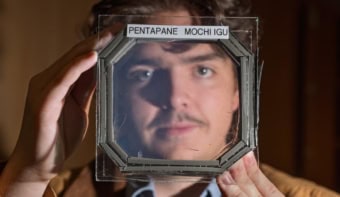Despite progress in energy storage technology, batteries still make up a significant part of the weight for devices such as laptops and even cars. Rather than focussing solely on the battery technology to tackle lightweight demands, Leif Asp at Chalmers University of Technology alongside a broad team of researchers in Sweden, Italy and France report in Multifunctional Materials that exploiting the electrochemical properties of carbon fibres could drop device masses by as much as 50%.
The mechanical properties of carbon fibres have been well understood for several decades, with a lot of seminal work dating back to the 1980s. While more recent, the promising electrochemical properties of carbon fibres have also been known since the late 2000s. However, no-one had looked into how to make carbon fibres that were stiff and strong while simultaneously demonstrating high-performance electrochemical properties, a gap in the knowledge that may be attributable to the nature of the research environment around carbon fibres. “When it comes to carbon fibres, knowledge is kept in the companies,” says Asp. “Few research groups are working on it.”
Asp and colleagues compared the microstructure and electrochemical performance for two types of commercial carbon fibre that have middling mechanical properties and one of the sector’s hardest hitters in terms of structural strength. Knowing that electrochemical properties improve for more amorphous microstructures with smaller more loosely oriented crystals, whereas mechanical properties improve with greater crystalline order, they were expecting a trade-off. What surprised Asp was that the compromise was far less than expected.
“The intermediate strength carbon fibres were much less organised than I expected,” says Asp as he describes some of the observations for the two middling carbon fibre types that remain competitive commercial options for applications that do not require extreme mechanical strength. “That these fibres still had such high mechanical properties means I might expect to be able to go to carbon fibres with even smaller crystals and I might still get good mechanical properties.”
Order isn’t everything
Carbon fibres are very sensitive to production conditions. The three types of carbon fibres at the focus of the current research – intermediate fibres T800 and IMS65, and the high modulus fibre M60J – were all produced by pyrolysis of polyacrylonitrile (PAN) but while the production temperature for T800 and IMS65 were similar, that for M60J was almost double. As a result the stiffness of the T800 and IMS65 is around 290 GPa and close to that of steel – still more than adequate for many applications – whereas that of M60J is almost double. The structural differences are immediately apparent from high-resolution transmission microscopy images, which are much more mottled for T800 and IMS65, whereas M60J shows a very finely stratified structure, with turbostratic defects where stratified layers run into each other.
Raman spectroscopy data, as well as axial swelling measurements taken as the carbon fibres were cycled through lithiation and delithiation suggest differences in the lithiation and resulting structural strains. M60J behaves akin to graphite, bar the absence of certain features attributed to turbostratic defects, while T800 and IMS65 behave like amorphous structures with small disoriented crystal sizes. The highly amorphous structure of T800 and IMS65 allows double the electrochemical capacity, while preserving good mechanical properties. The results raise the question “how far can you go” in terms of amorphous microstructures before the compromise in mechanical properties becomes too great.
Teamwork makes the dream work

The results suggest a promising outlook for using carbon fibre batteries for structural parts such as the body of a car. Although the battery performance itself does not compare with the state of the art, the resulting savings through weight reduction could have significant benefits for the system as a whole. However Asp highlights that it can be difficult to make these benefits apparent when approaching people at commercial automobile companies, who work specifically on one functionality such as energy storage, and may not appreciate the potential benefits of a material that underperforms in comparison to the current leading energy storage materials. “It’s a tricky issue to find the business case when you realise you need to go for replacing the materials for particular components, whereas the potential gain is at the systems level,” he adds.
He also emphasises how studies of such multifunctional materials thrive with a large team of researchers with wide-ranging expertise, which he likens to an orchestra. “My immediate reaction when I got the funding – I got really scared thinking now we have to do it, we need to get together a team interdisciplinary enough to do it but still agree the research aim and share the ambition – you find yourself like a conductor of an orchestra rather than a researcher.” In the same breath he expresses how grateful he is for the deep trust and mutual respect among the different researchers in his own team that made pursuit of the investigations so rewarding.

Can nanomaterials take on the extremes of space?
Next Asp would like to look more closely at radial swelling of the structures during lithiation. “We can measure how much these fibres expand axially when we charge them, and it’s pretty amazing – more that 1% for T800 and IMS65 (for which the strain to failure is 2%), and M60 almost doesn’t expand at all,” he says. “But radial measurements are harder as we need to do it in a microscope somehow.” He is also keen to better understand how many lithium atoms coordinate to each carbon in the lithiated product, and how the stiffness changes.
The full details are reported in the first issue of Multifunctional Materials recently launched by IOP Publishing. Asp also expresses his enthusiasm for the scope of the journal, adding, “I’m really excited about this journal – it’s a really fast growing and exciting area.”



